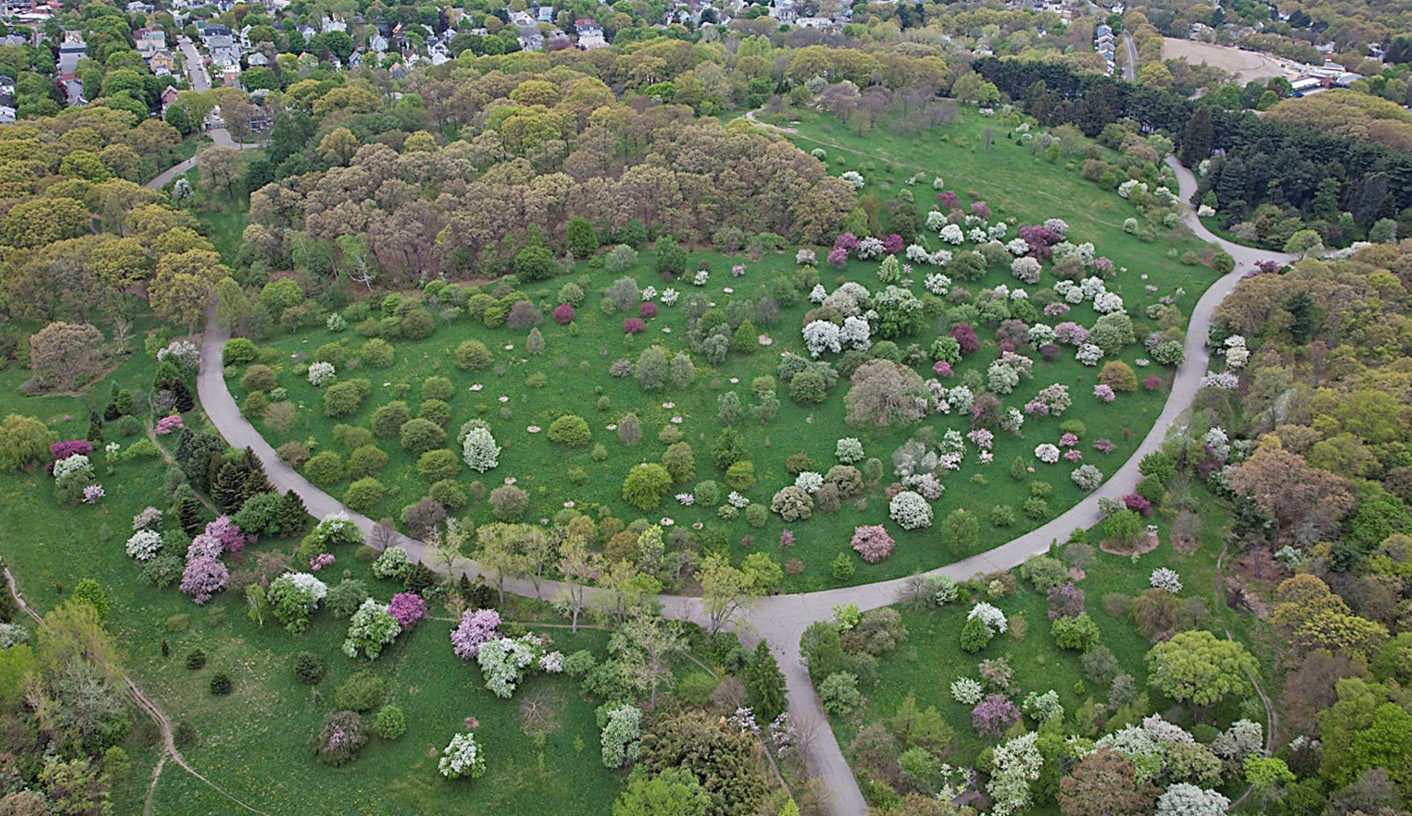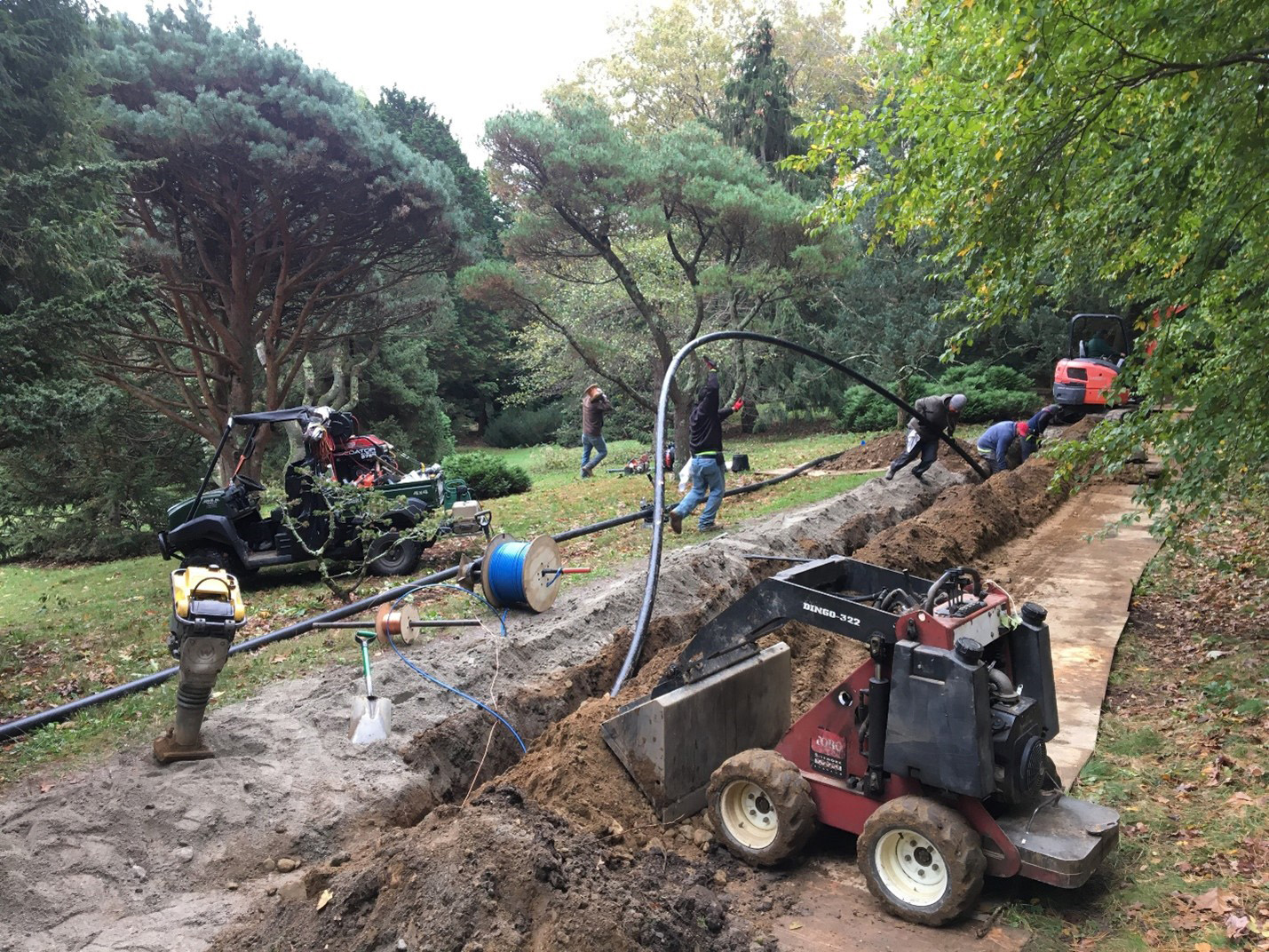Building resilience from drought in the Arnold Arboretum’s Living Collections
Among Boston’s rich array of cultural institutions and the treasures they hold in public trust, one museum stands apart—its galleries unbound, its masterpieces ever-changing. For a century and a half, the Arnold Arboretum has served as Boston’s tree museum, collecting, documenting, studying, and stewarding the world’s temperate botanical diversity. Arboretum holdings include some sixteen thousand living organisms, carefully curated, and planted within a historic Frederick Law Olmsted-designed landscape. And like any museum, the Arboretum must carefully safeguard its collections for their research value today as well as for the benefit of future generations.

With global change, the foreboding promise of hotter and drier summers poses significant challenges to the caretakers of the Arboretum’s living collections. Extreme drought is an existential threat to our plant holdings, from recently-planted accessions to our oldest sentinels. The prolonged effects of water loss exacerbate harm caused by the usual challenges to gardeners—pests, pathogens, and anthropogenic factors including soil compaction and pollution. These compounding risks can spell disaster for plants, weakening and finally killing them in time—a process which often takes years to fully manifest.
During the summer of 2016, Boston experienced unprecedented drought conditions. Severe lack of water caused significant damage to many valuable trees at the Arboretum, including the beloved beech collection, and the drought forced a final reckoning for several specimens severely compromised by beech bark disease. Beyond the loss of valuable plants, damage and slow decline caused by drought demands thousands of hours of added horticultural care for a landscape like ours. The process of prematurely replacing trees lost to drought involved significant investments of labor from the curatorial and plant production teams, drawing them away from other critical activities.

While the Arboretum has made significant advances in adding efficient, automated irrigation systems, the lack of available water infrastructure throughout much of the landscape still requires our horticultural staff to deploy water manually in times of drought. Manual watering practices rely on diesel-powered water tanks, sprinklers, and water cannons. Water must be deployed during the workday when loss from evaporation is greatest. Manual watering is incredibly inefficient both in terms of water use and labor. It is highly impactful on soils and increases our carbon emissions.
In the aftermath of the 2016 drought, under the leadership of Director William (Ned) Friedman and Director of Horticulture Andrew Gapinski, the Arboretum devised a sustainable long-term strategy for delivering water to our plants in ways that will not compromise operations or our commitment to sound environmental stewardship. Working with leading engineering firms and irrigation consultants, the Arboretum developed a master plan for bringing water infrastructure and automated irrigation to the entirety of the living collections.
“Every museum in the world depends on modern climate control systems to ensure proper care of their accessioned objects,” said Director William (Ned) Friedman. “The Arnold Arboretum is no different—with the exception of the fact that our museum objects (the accessioned trees, shrubs, and lianas) are displayed outside. So, to combat climate change-induced extreme drought going forward, we need to bring the cutting edge of irrigation technology and infrastructure to our plants.”

The first phase of the plan was completed in early 2020 through the generosity of multiple donors. Comprising the construction of a new water service adjacent to Centre Street Gate, the project established over 14,000 feet of irrigation line, with water deployed across 75 irrigation zones using 465 sprinkler and spray heads—all controlled through a centralized smart system. Construction was carried out by a team of irrigation professionals working in collaboration with Arboretum horticulturists, arborists, and irrigation specialists.
The Centre Street Irrigation Project provided the solid proof of concept needed for establishing water infrastructure and automated irrigation throughout the Arboretum landscape. Activated in April 2020, the Centre Street system began its efficient delivery of water to over 2,500 valuable plant accessions in the birch, hickory, oak, and viburnum collections, as well as the historically significant Explorers Garden. Through 2020 and 2021, the Arboretum expanded the Centre Street system with thousands of feet of irrigation, providing additional water connections and sprinkler capacity throughout the conifer, hickory, birch, ash, elm, and Oriental oak collections, extending the reach of the system to over 3,800 plants.

Due to the varied terrain and significant elevation changes found on Peters Hill, moving water throughout the entirety of this area will require the use of electrical booster pumps. To avoid the need for above-ground infrastructure, the Arboretum is taking a novel approach to house this new pump equipment by retrofitting and soundproofing an existing structure to hold a new 4” water service, electrical service, and pumping station. Construction of the pump station and irrigation system is anticipated in fall of 2022.
Downstream of the new pump station, large irrigation mainlines will span the entirety of Peters Hill, feeding dozens of access nodes for manual watering connection and future expansion of automated systems. With this layout, all collections on Peters Hill—which are currently watered using just one perimeter fire hydrant and watering tanks—will be within just 150 feet of a water connection. Additionally, 14 acres of collections along our Mendum Street border—perhaps the driest area of all on Peters Hill—will be serviced by nearly a hundred large golf-style rotor heads. This automated system and pump station controls will be fully integrated into the central control system, allowing Arboretum specialist Jed Romanowiz to set watering schedules based on forecasts and historical weather data—and at night when water will be efficiently absorbed by the soil.

In total, the Peters Hill Irrigation Project will provide water for 2,738 specimens that currently endure dire conditions when droughts occur. Among these organisms are the Arboretum’s ginkgo collection, nationally accredited by the Plant Collections Network and holding the greatest genetic diversity of any collection of wild collected ginkgoes in the world. Two other high-value collections that stand to benefit from this new system, the crabapples and hawthorns (a favorite of the Arboretum’s founder and first director, Charles Sprague Sargent), provide year-round interest and draw thousands of visitors each spring with their showy blossoms. Atop the Peters Hill summit, the honey locust collection includes dozens of majestic specimens, adorned in brilliant gold each October.
Looking ahead, the Arboretum is setting its sights on a third and final phase of the project to safeguard an additional 60 acres of treasured collections along Hemlock Hill Road and Meadow Road, including the Arboretum’s prized national collection of maples. This phase will also require the construction of a freestanding booster pump station to move water across both sides of Bussey Hill. Once completed, the Arboretum’s drought mitigation initiative will represent the most comprehensive infrastructure project designed to protect the living collections in our 150-year history. Most importantly, this effort embodies a key component of the Arboretum’s strategy to mitigate the effects of climate change on the plants we grow and treasure—and signals a strong reaffirmation of our founding promise to protect and preserve biodiversity for generations to come.
Our initiative for emergency drought mitigation systems to protect the health and longevity of our treasured collections is funded by generous donors as part of our Sesquicentennial Campaign. We are grateful to our supporters who have made the first two phases of this project possible—thank you for your contributions to this important effort. Additional funding is required to launch additional phases to bring drought mitigation infrastructure to our entire landscape. Please help us achieve this critical need to bring greater resilience to climate change at the Arnold Arboretum by considering an additional gift of support.